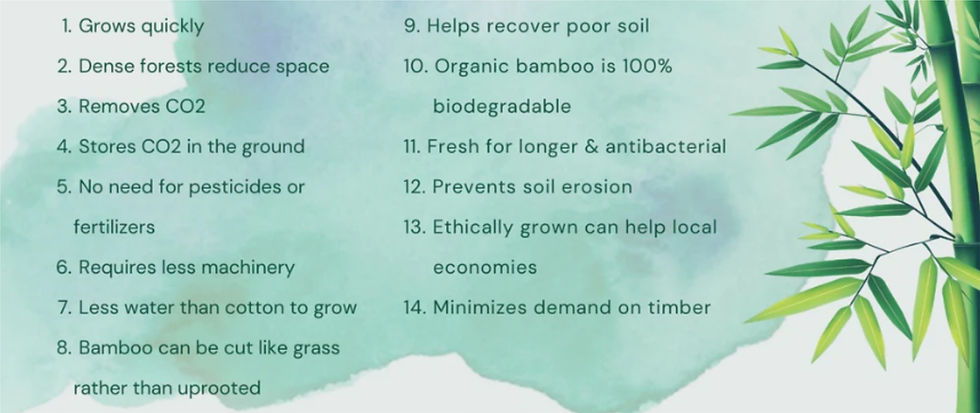Sustainable Materials
When it comes to sustainable fabrics, our faves are those created by Mother Earth.
Think: organic cotton, hemp fabric, linen, and (depending on how it is sourced) ethical wool and ethical cashmere.
Sustainably made and naturally sourced products can positively impact your feelings of well being.
A growing body of empirical evidence is reveals that both active and passive connect with nature provides psychological social and emotional benefits.
Our aim when selecting fabrics is: Fabrics made from renewable or replaceable sources, recycled and naturally sourced fabrics, always ensuring our choice of fabrics have a lower environmental impact across their whole life cycle. We are committed to using resources wisely and efficiently and adopting advanced technologies to reduce our environmental impact.

Organic Cotton
Organic cotton has proven benefits and nothing can beat its claim for sustainability.
It preserves biodiversity by eliminating synthetic pesticides and fertilizers, it reduces nitrogen emission in the atmosphere and produces 94% less greenhouse gas emissions, cotton grown organically reduces soil erosion and provides healthy working environment to the workers and small scale farmers.

Jute
Jute, also known as “the golden fiber”, is a long, soft, and shiny fiber made from the cellulose and lignin material from the jute plant. It is quick and easy to grow, having an excellent cost-to outcome ratio, 100% bio -degradable and it's the most affordable natural fiber on the market at the moment.

Juco
Juco is a smart, versatile and increasingly popular new ecological fabric. The fine blend of both jute and cotton give juco an edge on both materials, by taking the most beneficial properties of each it offers an ecological alternative to cotton and canvas bags.


Linen
Linen is made from the flax plant. It is one of the oldest, best-loved textiles in the world. The flax plant requires less water to cultivate than other textile crops and can be grown without pesticides. Bi-products from the flax plant can be used in making linseed oil, paints from the seeds, or rope from the excess fibres. If you think flax is just about linen tablecloths, think again..from bank notes to cigarette papers.

Hemp
One of the reasons that make hemp a sustainable option for clothing is it is a carbon-negative raw material - the crop absorbs more carbon from the atmosphere than it releases.
Hemp is a high-yielding crop that can produce more on less land.The hemp crop requires little water to grow and replenishes soil nutrients to help improve soil health and is biodegrabiodegradable

Bamboo
Bamboo fabric is similar to the softness of silk naturally smoother making bamboo fabric hypoallergenic. Bamboo possesses an anti-bacteria and bacteriostatic bio-agent called "Bamboo Kun", allowing it to naturally flourish and grow in the wild without the use of pesticides or fertilisers. This beneficial quality of the plant remains in its textile form, killing all bacteria keeping the wearer feeling fresher and odour free for longer, making the garment healthier and more hygienic.


Milk
Each year thousands of gallons of milk are poured down the drain. It is a wasteful problem.
Step in, Milk Fabric - a wonderfully creative product, transforming week-old soured milk into silky-smooth high end fashion fabric.

Banana
A sustainable alternative to cotton and silk- Banana fibre, is said to be nearly carbon neutral.
Banana fiber production has a negligible impact on the environment. This fabric is derived from what would otherwise be a waste product; banana peels an d harvested banana stems.

Orange
Citrus fruits are healthy and tasty, and the worldwide production of oranges is steadily increasing. However, in the citrus fruit industry, processing that float, for example to make it into juices, also generates huge amounts of waste. Lightweight Citrus cellulose yarn can be used in its entirety to make a 100% citrus biodegradable fabric that is soft, silky, and lightweight.


Aloe Vera
The fabric repels moisture and cold from the outside, a large number of pores allow an easy evaporation of sweat. The fabric cools during the warm nights, and if you are cold on the contrary it warms. It features excellent antibacterial and anti-allergenic properties. The Aloe vera Fibre is biodegradable and recyclable, grown pesticide free. The Aloe Vera plant requires less water than other natural plants like cotton

Soybean
With the softness of silk, soy fabric or “vegetable cashmere” is one of the world's most eco-friendly fabrics. Soybean protein fibre is made from soy pulp, which is an insoluble part of soybeans, and a by-product of tofu and soy milk production, making it environmentally friendly and biodegradable.

Eucalyptus
Eucalyptus as a material is known as Lyocell, the trees are cut rather than uprooted, meaning that there is no need to continuously plant new trees. They also grow quickly, don’t need irrigation or pesticides, and can grow in relatively poor, dry, and rocky soil. Lyocell fiber is considered to be one of the most sustainable materials in the world, where 99% of water and solvents are recycled and reused.
Eucalyptus fabric is 10x more sustainable than cotton.





